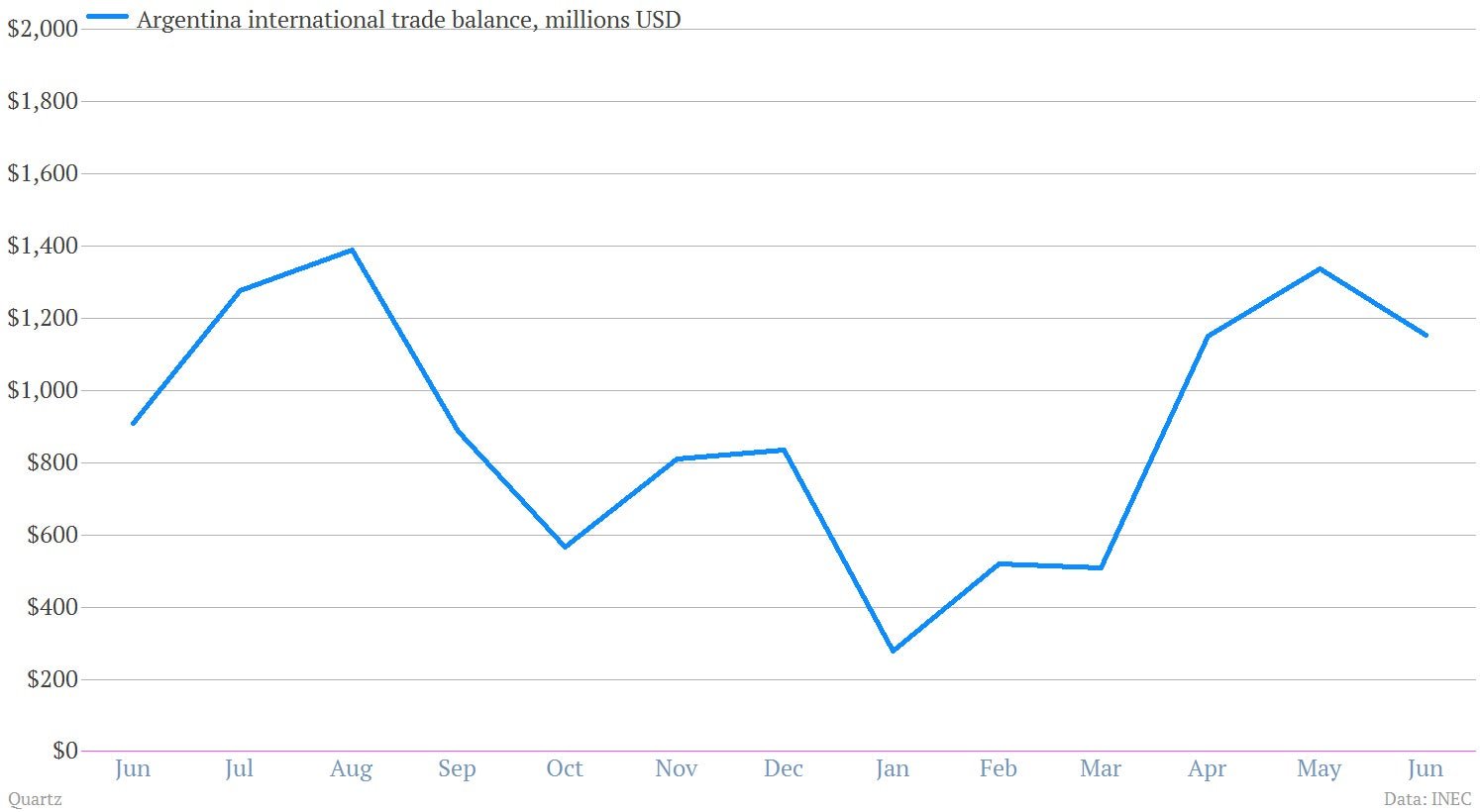Finally, some good news for Argentina—to be taken with a grain of salt
Argentina’s trade balance for June—the net difference between its exports and imports for the month—just jumped 27% from a year earlier to $1.16 billion, according to its national statistics bureau (INEC). That’s welcome news for a country struggling to gather foreign cash to start paying off its myriad foreign debts.


Argentina’s trade balance for June—the net difference between its exports and imports for the month—just jumped 27% from a year earlier to $1.16 billion, according to its national statistics bureau (INEC). That’s welcome news for a country struggling to gather foreign cash to start paying off its myriad foreign debts.

Exports jumped 8% in June to $7.55 billion on the heels of a record harvest in the country. Primary good exports, especially grains and cottons, climbed 20%. And Argentina finally began tempering its imports of foreign oil; energy imports rose only 7% for the month, well below the double digit growth seen of late (energy imports have risen 23% in the first half of the year), and on par with the 7% spike in energy exports for the month.

But despite the strong numbers for June, Argentina’s trade surplus dropped nearly 26% in the first half of 2013 compared with the same period last year. As foreign investment has fallen in the wake of its 2001 debt default, Argentina has depended more on its trade surplus to fund the foreign exchange reserves needed to pay its debts and import bills. But its reserves of foreign cash have been falling for some time now, and fast:

Argentina’s central bank lost $2.84 billion in foreign exchange reserves in the first quarter of 2013 alone, almost as much as it lost in the whole of last year ($3.08 billion). The country’s tourism industry, another way to build up foreign reserves, is in the dumps. That means continuing to boost its trade surplus remains the only way to revive its faltering economy. Too bad record harvests don’t come along every month.